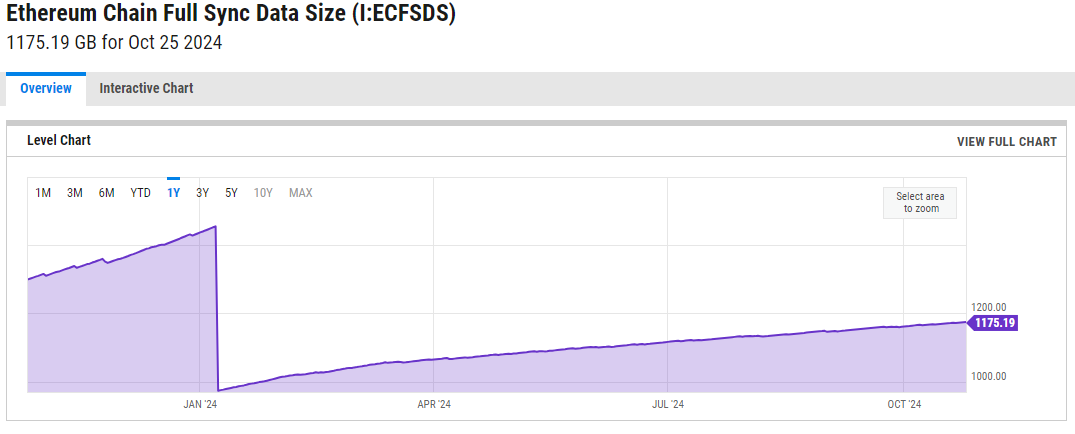Vitalik Buterin, co-founder of Ethereum, has released the fifth part of his blog series on the blockchain network’s future path titled “The Purge,” which aims to reduce data bloat and simplify Ethereum’s protocol.
The Purge focuses on trimming unnecessary data storage and eliminating outdated features to make Ethereum more efficient while preserving “the permanence” of the blockchain.
The Purge is not set to directly impact Ethereum’s gas fees. However, the proposed changes may enhance network performance and reduce operating costs.
Reducing storage for better node operations
A key element of The Purge is to tackle the increasing barrier new nodes face when seeking to join the Ethereum network, increasing storage requirements.
A fully-synced Ethereum node currently requires over 1.17 terabytes (TB) of storage — primarily due to historical data, according to ycharts data.
The Purge also aims to cut client storage requirements “by reducing or removing the need for every node” to permanently store all history.
“[…] and perhaps eventually even state.”

State expiry
Buterin’s post also highlighted the current state of the network, revealing that any new state data created is stored forever, resulting in the state expanding continuously.
“State is much harder to ‘expire’ than history, because the EVM is fundamentally designed around an assumption that once a state object is created, it will always be there and can be read by any transaction at any time.”
Put in layman’s terms, any new data added to the network stays there permanently, causing the system to grow, but Buterin seeks to counter this through “partial state expiry.”
This new idea would involve less frequently accessed state data being expired and revived later via cryptographic proofs when required.
Move toward stateless verification
Buterin’s Purge blog post follows the introduction of The Verge on Oct. 23, designed to make running a node on the Ethereum network more secure and accessible.
The Verge upgrade aims to decrease hardware requirements for blockchain block verification without storing large amounts of data through “stateless verification.”
This new verification method could “make fully-verifying the chain so computationally affordable that every mobile wallet, browser wallet, and even smart watch” can run a node on the network.
Source: https://cointelegraph.com/news/vitalik-buterin-ethereum-purge-plan-reduce-blockchain-bloat



